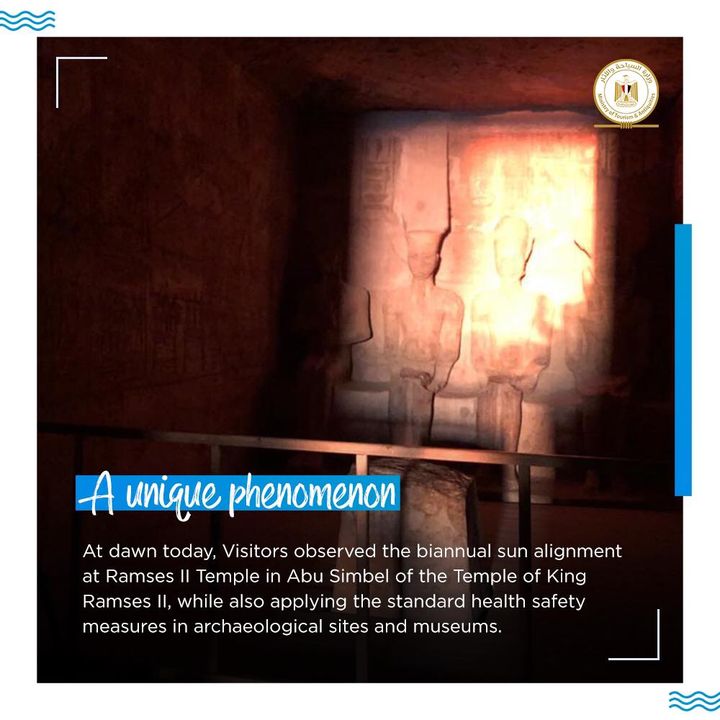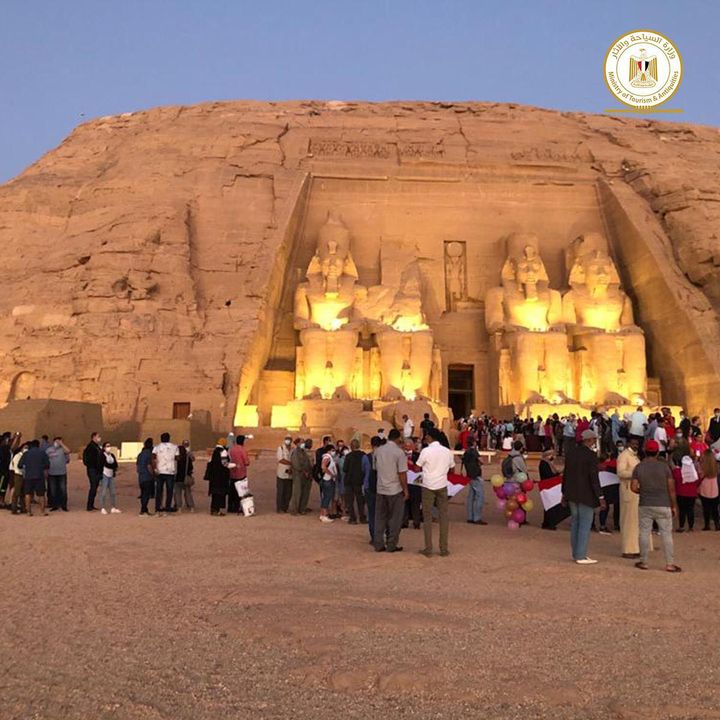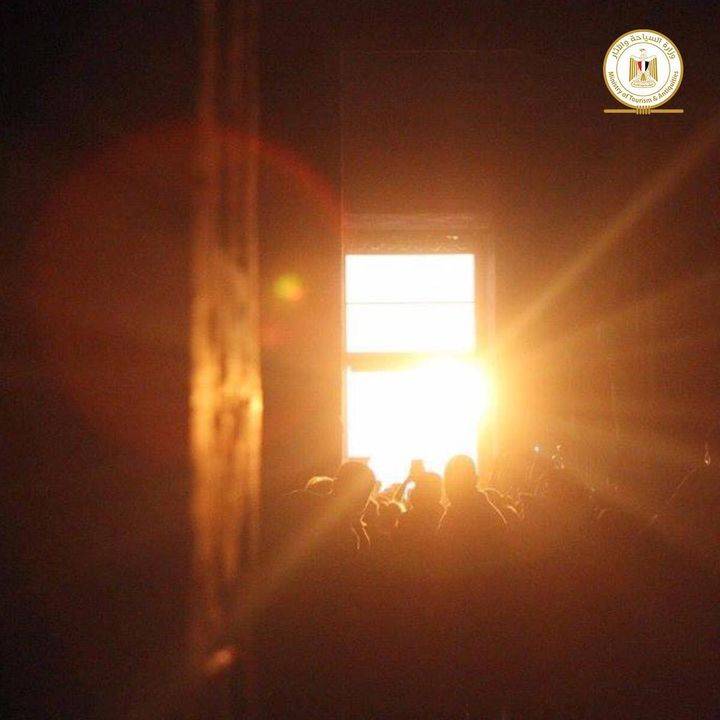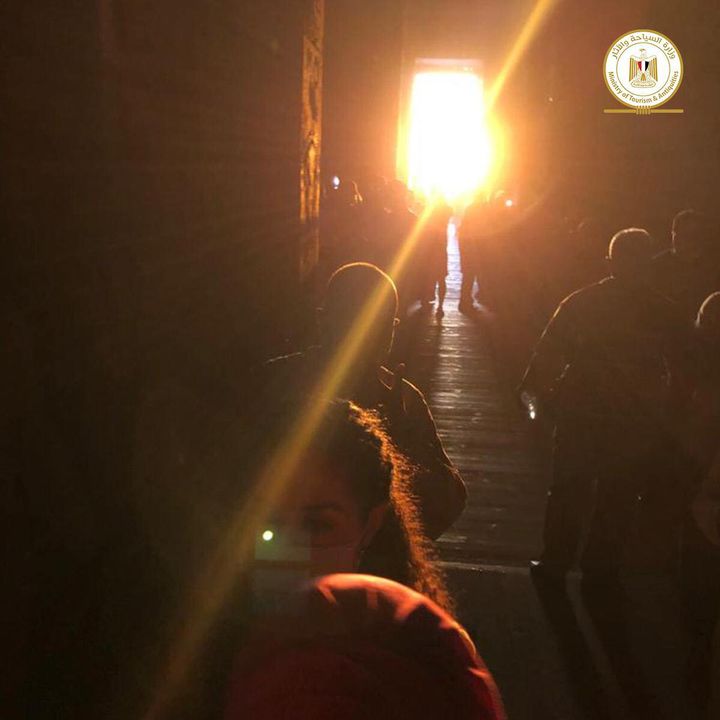وأوضح عبد المنعم سعيد مدير عام منطقة آثار أسوان والنوبة، أن عددا من السائحين الأجانب والعرب والزوار المصريين توافدوا فجر اليوم على المعبد للاستمتاع بمشاهدة هذه الظاهرة الفريدة التي تتكرر مرتين كل عام، يومي 22 أكتوبر و22 فبراير، لتجذب أنظار العالم.
وأضاف أن الظاهرة بدأت الساعة ٥:٢٠ صباحا واستمرت لمدة ٢٠ دقيقة.
حيث تتسلل أشعة الشمس داخل المعبد،؛لتصل إلى قدس الأقداس والذي يبعد عن المدخل بنحو ستين مترًا، لتشع بنورها على منصة عليها تمثال الملك رمسيس الثانى جالسا وبجواره تمثال الآلهة رع حور أختي، وآمون، وبتاح، ولكن لا تتعامد الشمس على وجه تمثال “بتاح”، الذى كان يعتبره القدماء إله الظلام.
وأكد مدير عام المنطقة على التزام إدارة منطقة آثار أبو سمبل بتطبيق كافة الإجراءات الوقائية والتدابير الإحترازية التي تضمن سلامة الزائرين ومنها التأكيد على إرتداء كمامات الوجه والحفاظ على المسافات الآمنة بين الأشخاص والتعقيم مع وضع العلامات التوضيحية وتعليمات الوقاية.
At dawn today, Visitors from around the world observed the unique biannual phenomenon of the solar alignment in Ramses II Temple in Abu Simbel of the Temple of King Ramses II, with all health safety measures in archaeological sites and museums implemented.
During the solar alignment, sun rays enter the temple’s sanctum to light three of four statues.
The three statues belong to King Ramses II and the deities Amun-Re and Re-Hur-Akhty, leaving the God of Darkness Ptah in shadow to symbolise his connection to the underworld.
The head of the antiquities sector in Aswan and Nuba, Abdel-Moneim Said, said that the alignment phenomenon took place at around 5:52am and lasted for nearly 20 minutes.
He added that today, a number of foreign tourists, Arabs and Egyptian visitors flocked to the temple to enjoy watching this unique phenomenon, which happens twice every year, on October 22nd and February 22nd. It’s a phenomenon that attracts the world’s attention, as the sun’s rays infiltrate the temple, to reach temple’s sanctum, which is about sixty meters away from the entrance.
He asserted that all hygiene safety precautionary measures were taken, social distancing was kept and visitors wore masks inside the temple.




